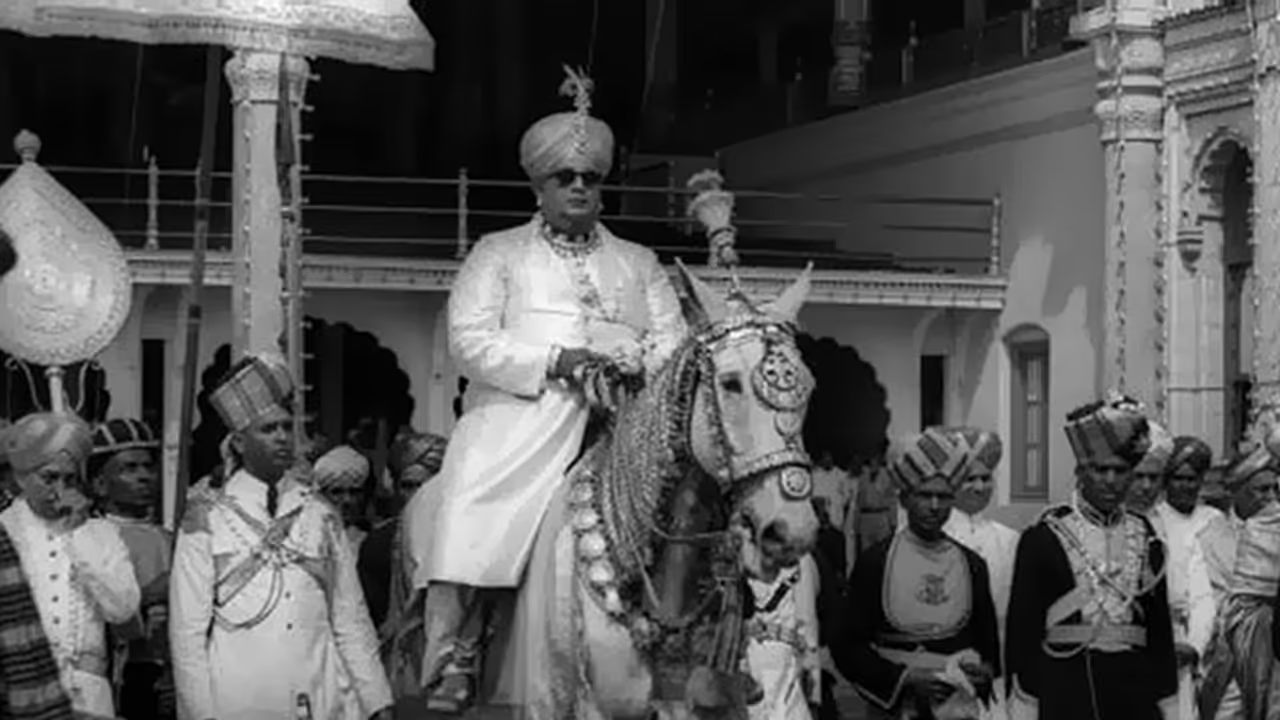All roads lead to Mysuru, the cultural capital of the State, where the city is decked up to host the Dasara The Dasara which was expected to be a low-key affair has turned out to be a grand affair following bountiful rains Dasara is not just a religious affair, but it's the celebration of tradition, history and the culture of Karnataka
Kannada poet laureate Prof KS Nisar Ahmed showered floral petals on the idol of Goddess Chamundi atop the Chamundi Hills to mark the beginning of the ten-day grand Dasara in Mysuru on Thursday. Ahmed is the first Muslim to inaugurate the Dasara. He was accompanied by Chief Minister Siddaramaiah and ministers from his cabinet.

The main attraction of the day one is the private darbar or 'khas darbar' conducted by Yaduveer Krishnadatta Chamaraja Wadiyar, the scion of the Wadiyar family. Although the 'khas darbar' is a private affair, it infuses the grand traditions of the bygone era. Dressed in royal robes, complete with the peta and other accessories, Yaduveer offers puja before ascending the throne at a particular time.
ALSO READ:
Before ascending the throne, Yaduveer followed the set of traditions including the visit to the Chamundi Thotti in the Palace premises where silk thread is tied around his wrist - which is called kankana dharane. After offering puja at Gaddige Ammanavaru temple, he comes to ascend on the khas darbar amidst vedic chants and hymns. He is offered prasad from various temples in Mysuru, Melkote, Sringeri and other places. The private darbar will be held both in the morning and evening to a packed audience. The private darbar gives a peek into the history of the kings court then. Although, it's a customary, it still draws audience from far and wide.
The golden throne on which Yaduveer ascends is assembled traditionally by a family in Gejjagalli. Every year, ahead of Dasara celebration, they assemble the throne which is made up of 16 pieces. Special puja is offered to the throne and would be in for use for private darbar or 'khas darbar' until the dasara celebrations are over. Later, it would be shifted back to the strongroom.
History has it that the golden throne first belonged to the mythological hero, Yudhishtir. Later, it was brought to Penukonda from Hastinapura. However, history has it that the throne was hidden by Kampili King Kampilaraya who buried the throne to protect it from Muhammed Bin Tughlaq. While Kampili King was killed by Tughlaq, the throne lay buried until it was discovered and handed it over to King Harihara 1 of Vijayanagar in 1338, reports The Times of India quoting the book 'Mysore Royal Dasara'. After the fall of Vijayanagara empire, the throne came to be in possession of Mysuru kings. It was briefly with Tipu Sultan too. However, after his death, it has been in possession of Wadiyars. The throne is bejewelled with gold and silver figurines.
ALSO READ:
The Amba Vilas Palace or popularly known as Mysuru Palace is where the heart of Mysuru Dasara is. It is the official residence of Mysuru Wadiyars. However, with the abolition of the privy purse and the royal family now lives in a portion of the palace. Built by Rajarshi Nalvadi Krishnaraja Wadiyar, the iconic palace is a cynosure of all eyes. It is a feast to see when the palace is illuminated with over one lakh bulbs after sunset. The palace hosts classical music programmes and for many artistes, performing here is a matter of prestige.
If you want to explore Mysuru Dasara apart from the historical treats, you would be spoilt for choice here. Innumerable programmes have been lined up for the Dasara. There is 'Jatti Kalaga' the traditional wrestling, where you would see a good number of participation from women. There is Yuva Dasara, flower show, the famous Dasara exhibition, food stall and so on.
Dasara started in Srirangapatna?
the same zest to celebrate the Dasara at Srirangapatna, the place where it all began is almost missing. History has it that Dasara was the long-held celebrations of the Vijayanagar kingdom. However, after Srirangapatna was captured by Raja Wodeyar 1 from Sriranga Raya (of Vijayanagar dynasty) in 1610, he continued the tradition as 'victory parade'. Srirangapatna was the capital of Mysuru rulers then. However, after Mysuru rulers shifted their capital to Mysuru in 1799, the celebrations too shifted to Mysuru, and it began to fade in Srirangapatna and almost came to a stop, till a decade ago.
ALSO READ:
Since then it has come to be known as Mysuru Dasara. So much so that the state government allocates separate fund for the grand celebration in Mysuru, completely neglecting the Srirangapatna.
